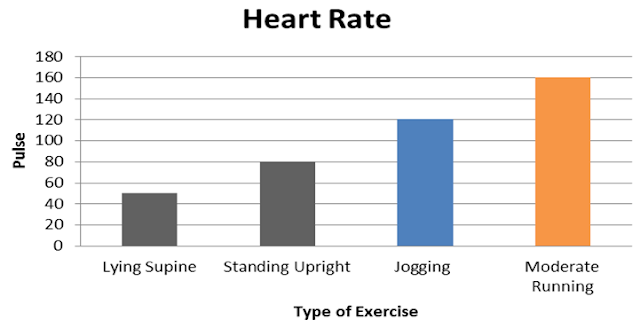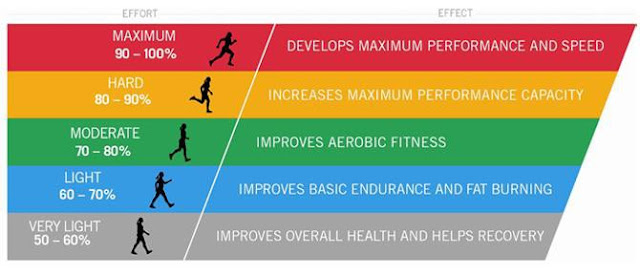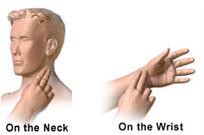Cardiovascular System Implementation on Sports Performance. The term of cardiovascular comes from a combination of cardio and vascular words. Cardio is another name for the heart, while the vascular another term on the blood vessels. The cardiovascular system can be interpreted as the circulatory system to the heart works as a pump to drain the blood to all parts of the body through the blood vessels.
So there are three elements in the circulatory system are the heart, blood and blood vessels. When the implementation of the sports activities going on physiological responses performed by the cardiovascular system.
One response is to do a heart that is by increasing the heart rate. With the increase in heart rate, the amount of blood that is distributed to more quickly accepted by limb.
It is important to deliver oxygen and nutrients to the cells, bringing heat to be brought in and taken out through the surface of the skin and release carbon dioxide as a result of metabolic waste. While the response of blood vessels do with the process of vasodilatation in active muscle or dilate blood vessels so as to widen the blood vessels so the more the amount of blood that can flow quickly through the blood vessels.
The intensity of exercise is very closely related to the cardiovascular system. The intensity of exercise can be interpreted as "mild level or severity of sports activities" undertaken. The level of exercise intensity is directly proportional to the work of the cardiovascular system. When the exercise intensity is low, the heart will beat more slowly, but at a higher intensity exercise, the a heart will beat faster.

By looking at the picture above, it is known that different types of exercise activities have a level of intensity of exercise is different. This has an impact on the increasingly fast or slow heart rate individual. Furthermore, the range of exercise intensity then there is a special purpose or effects on body.

By looking at the picture above, it is known that each intensity interval exercise training has a purpose and a different impact on the body. For example if you want to burn fat in the body, the intensity of the exercise performed should be at intervals of 60 to 70% of maximum heart rate individual. Based on the above table can be categorized as light intensity exercise.
For example, if an athlete has aged 20 years and he has a maximum heart rate of 200 beats per minute. Therefore, for optimal fat burning exercise, the pulse should he defends is in the range of 120-140 beats per minute. If it turns out during practice of the pulse in the range of 160-180 beats the effects of the exercise are not optimal in fat burning efforts, but more impact on increasing the body's maximum capacity.
By looking at the above example, it is known that the knowledge of the intensity of the workout and the effects are very important to understand and implement by coaches, the coaching staff and athletes who are practitioners of the sport. Because without a good knowledge and best practice in training intensity and effects of the training program that is run most probably not achieve its objectives in an optimal.
Therefore, the implementation of the cardiovascular system is simple to do by practitioners of the sport as a form of sports physiology real practice is to perform pulse measurement routine.
Pulse measurement include pulse measurement basalt, rest, exercise and recovery. Basal pulse measurement is done in the mornings when the athlete just woken up. Measurement of resting pulse rate is calculated when the athletes in a relaxed position or sit without doing meaningful activities. Exercise pulse rate is measured when the athlete is doing sports activities, especially in the core phase. While the recovery pulse rate is calculated when the athlete has finished the core workout.
Pulse measurement is done routinely in order to determine the performance of the cardiovascular system update on the athlete. Well-trained athlete will certainly have a very optimal cardiac performance. In general it is characterized by low resting pulse rate and pulse rate recovery easily back down under the number 100 after performing core exercises heavy.
To always know update of the pulse, the practitioners should practice sports routinely pulse measurement. When constrained by the cost of the pulse measurement can be done by palpation or touch yourself.
The simplest way is to calculate the pulse at the wrist or neck for six seconds. The results of the count multiplied by ten. For example, counting the resting pulse rate of an athlete, after checking the six figures obtained as a result of the calculation. Then six multiplied by ten is 60. Figure 60 beats per minute is counting the resting pulse rate value of these athletes. Excess how these measurements are not required cost whatsoever, but its weakness is likely to occur miscalculations pulse when athletes or practitioners of other sports are less sensitive in detecting a pulse.

Another way that can be done by a health practitioner to measure the pulse is to use a pulse measuring device. Usually these tools shaped watches are equipped with a chest band, or bracelet detection pulse. Pulse measurement by this method is more practical because practitioners of the sport does not need to measure pulse rate directly. Automatically pulse measurement results will appear on the screen on the hour or bracelet.

The advantages of this measurement tool is the result of the measurement fast and accurate. But the investments needed are fairly expensive purchase. Pulse detector as shown above has been widely used as one test and measurement tools to determine an update sports the resting pulse rate, exercise and recovery of an athlete.
That's the article about cardiovascular system implementation in sports performance. May be useful for the reader as well. thank you.
